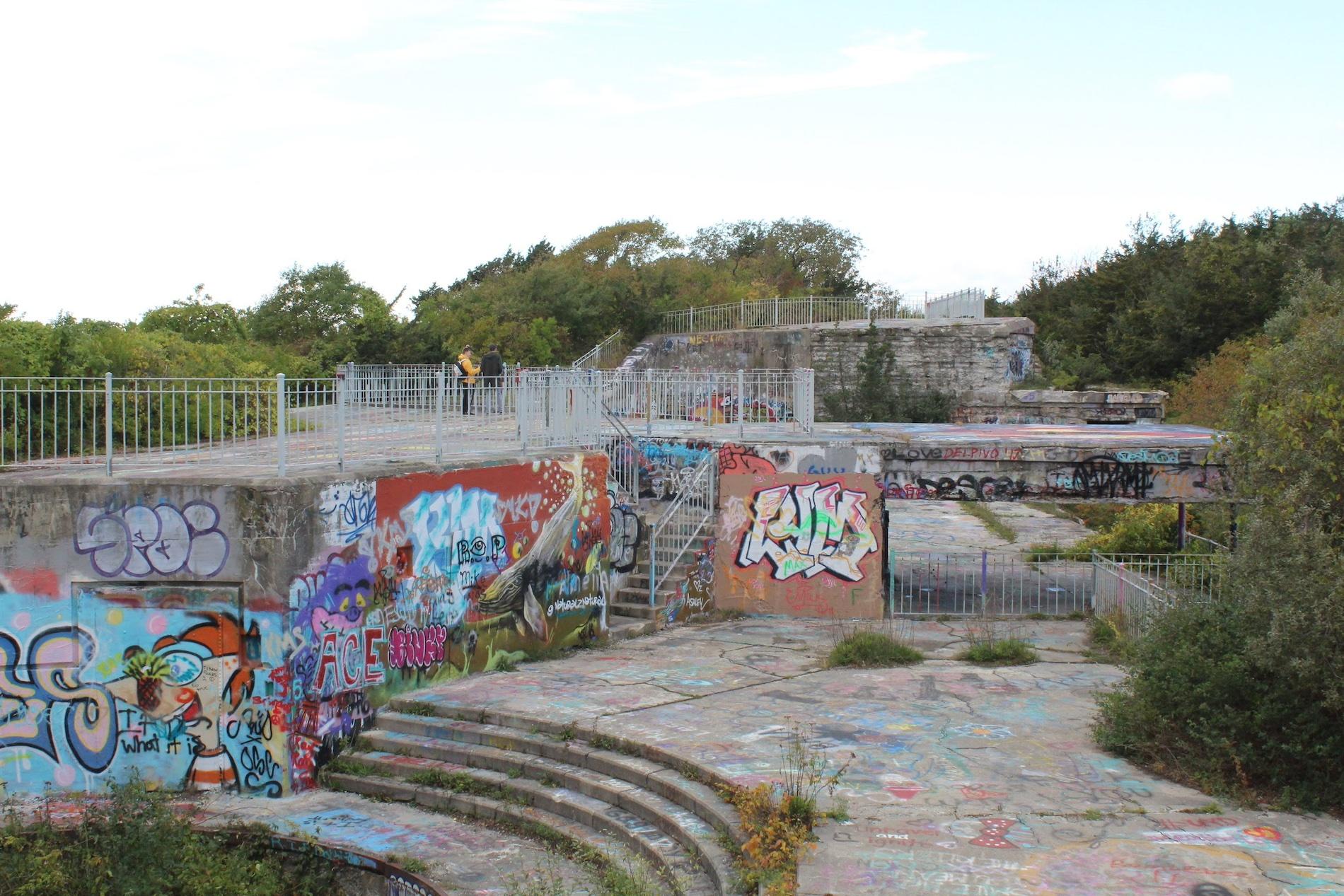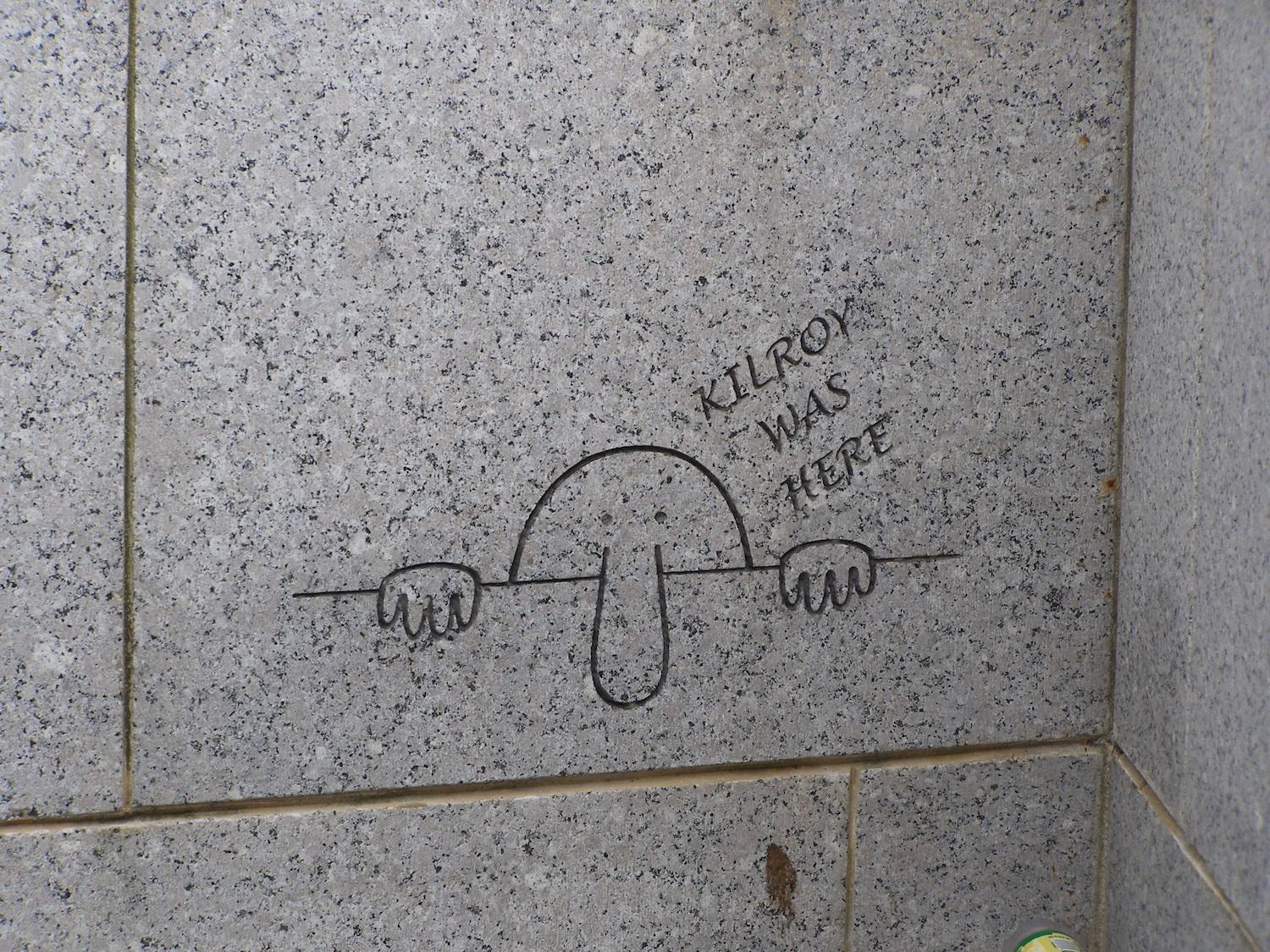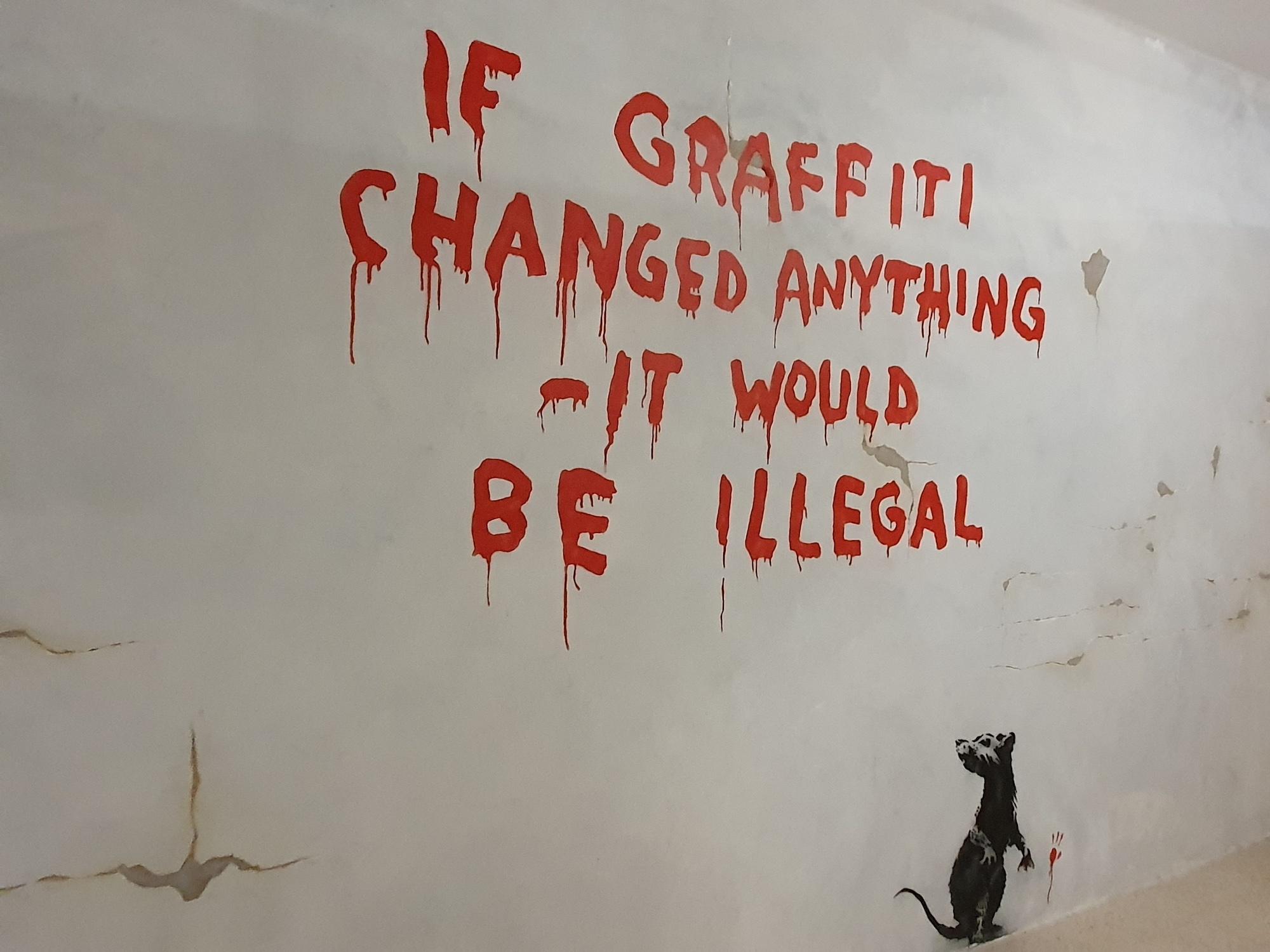During World War II, graffiti began making its mark through “Kilroy.” A sketch of a bald cartoon figure peering over a wall, accompanied by the phrase “Kilroy Was Here!”, became a symbol for American soldiers. The tag could be found on bathroom walls, bridges, sides of ships, and even on the shells of Air Force missiles, acting as a form of documentation as to where the soldiers had been.
Although its origins are not exactly known, the drawing was likely inspired by a British cartoon, and the name is believed to have come from an American shipyard inspector. Even during such tumultuous times, the graffiti served as a connecting force between soldiers, reminding them of their resilience as “Kilroy” followed them from place to place.
Contemporary graffiti– the style which most are more familiar with today– came into popularity a few decades later, in the 1960s and 70s, particularly throughout cities across the United States. This was mainly catalyzed by the invention and increasing availability of aerosol spray cans.
































